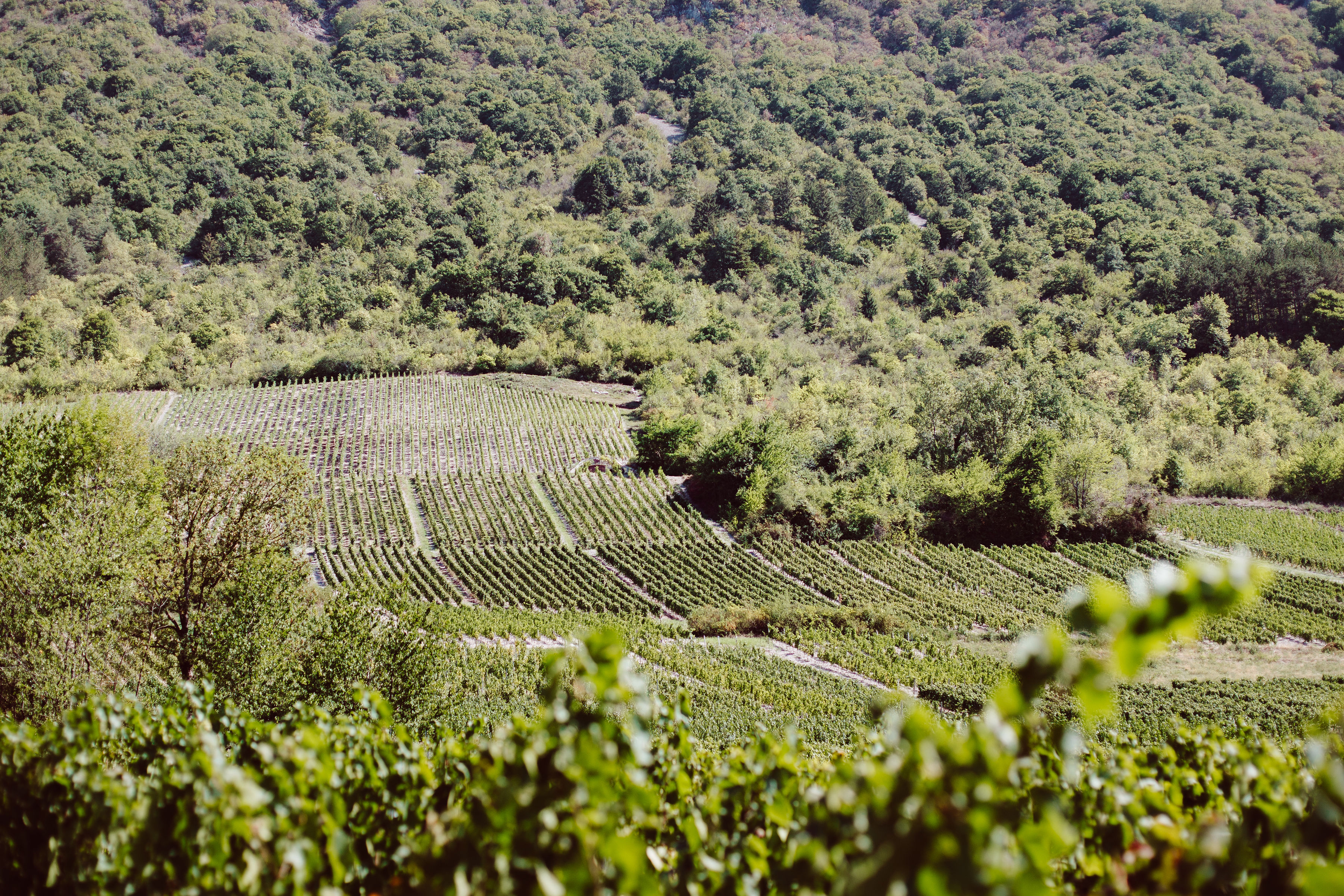Châteauneuf-du-Pape AOP
Châteauneuf-du-Pape wine: from the papal court to your table
Served on gastronomic and Michelin-starred tables throughout the world, Châteauneuf-du-Pape has a reputation that is definitely well established. In the Middle Ages, the popes of Avignon had already understood the high potential of this wine from the southern Rhône valley. They contributed to the development of the vineyard of this pretty commune of the Vaucluse and to its export throughout the world. Now it is your turn to taste this AOC wine, which is mainly available in red, but which we also like to discover in white. Thanks to a great diversity of grape varieties, domains and vintages, Châteauneuf-du-Pape wines, although prestigious, can be found in a wide range of prices, often making the exception affordable.
General presentation of the appellation
The wines of Châteauneuf-du-Pape owe their fame to a pontiff: Pope John XXII. In the 14th century, the papacy left Rome for Avignon and, to supply the papal court with wine, the popes developed the surrounding vineyards. John XXII set about developing Châteauneuf-du-Pape, where he brought in winemakers from Cahors to work the vines and produce wine. The town owes its name to the fortress that the pontiff had built there and which served for many years as the summer residence of the popes of Avignon.
Today, the wines of Châteauneuf-du-Pape are still produced in the Comtat Venaissin plain, between Orange and Avignon. In addition to the commune that gives it its name, there are the communes of Orange, Courthézon, Bédarrides and Sorgues.
The particularity of this Rhone Valley appellation is due to the grape variety of the vineyard. The 3,300 hectares of the Châteauneuf-du-Pape appellation are mainly planted with Grenache. But 12 other grape varieties are authorised for the AOC, namely :
-Mourvèdre
-Syrah
-Cinsault
-Muscardin
-Counoise
-Clairette
-Bourbourlenc
-Roussanne
-Picpoul
-Picardan
-Vaccarèse
-Terret noir
The winegrowers are free to draw from this wide catalogue, producing sometimes blends in various proportions, sometimes single-variety wines.
Characteristics of Châteauneuf-du-Pape
Châteauneuf-du-Pape is first recognisable by its bottle. In 1937, one year after it received its AOC, the wine was given a bottle with a coat of arms. It is engraved with a shield representing the papal tiara and the keys of Saint Peter; all around, in gothic letters, one can read "châteauneuf-du-pape contrôlé".
The red wines have an intense purple to garnet colour and complex aromas of red fruits and spices. With time, leather, truffle, musk, liquorice and even aniseed mark this aromatic palette. They are also distinguished by their roundness, generosity and unctuousness. Finally, a red Châteauneuf-du-Pape can be kept for 15 to 20 years.
As for the white wines, freshness and floral notes dominate: honeysuckle, narcissus, vine flowers... Elegant, fine, lively: the white Châteauneuf-du-Pape wines are just as interesting as the famous reds of the AOC.
From estate to producer, Châteauneuf-du-Pape wines offer diverse and varied characteristics. All of them offer the inimitable style that has made this Rhone Valley wine famous worldwide.
How to taste a Châteauneuf-du-Pape
Both powerful and elegant, the red Châteauneuf-du-Pape wines go very well with venison, i.e. large game: venison, wild boar, roe deer, etc. They also go well with strong-tasting red meats, such as lamb, or with typical cheeses. It is advisable to serve a red Châteauneuf-du-Pape at a temperature of between 16 and 18°C.
White Châteauneuf-du-Pape wines bring freshness to white meat dishes, such as poularde or veal. They also go well with river fish and goat's cheese, whether cooked or blue-veined. Serve them at a temperature of 11-13°.
Laissez-vous tenter... par les autres appellations !
Le vignoble
